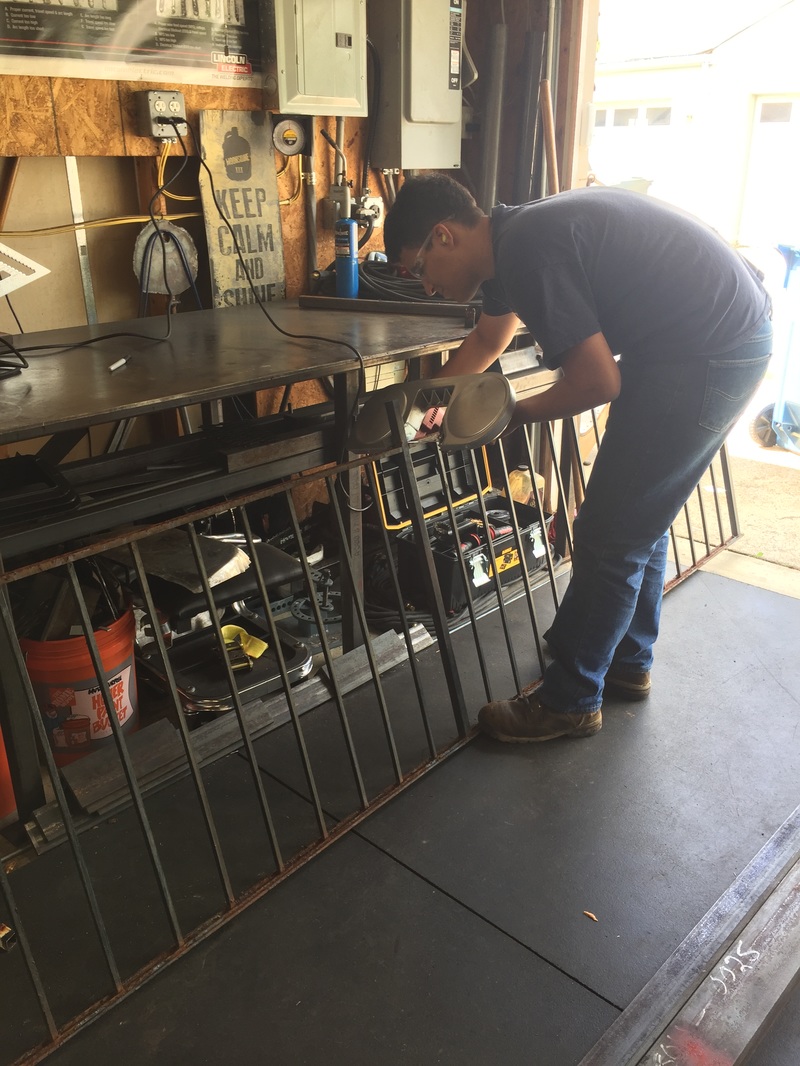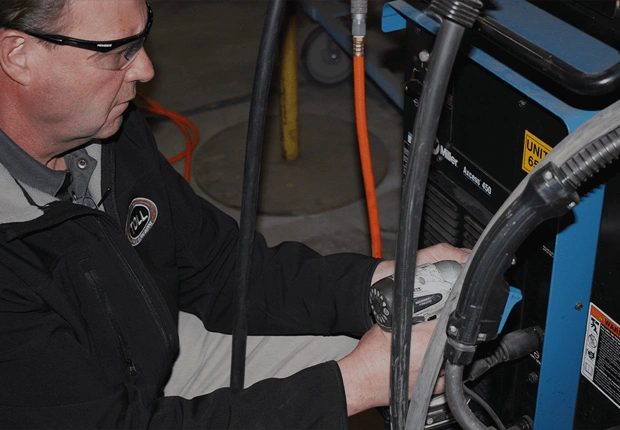Usual Welding Repair Issues and How to Address Them Successfully
Welding repair services often experience a variety of problems that can jeopardize the integrity of the end product. Usual troubles consist of insufficient infiltration, porosity, and misalignment, amongst others. Each problem presents one-of-a-kind difficulties that need certain strategies for resolution. Recognizing these issues is vital for welders intending to enhance their skills and end results. This discussion will discover these typical welding repair issues and effective approaches to resolve them.
Inadequate Penetration
Insufficient penetration occurs when the weld steel stops working to fully fuse with the base product, causing weak joints and possible structural failures. This problem commonly stems from not enough warmth input, inaccurate electrode angle, or inappropriate welding speed. Welders might encounter insufficient infiltration because of a miscalculation of the essential specifications for a specific product thickness or kind. Additionally, contamination on the base product's surface can hinder reliable bonding, exacerbating the trouble. To deal with poor infiltration, welders should guarantee ideal settings on their devices and preserve a tidy job surface. Regular assessment of welds is suggested to determine any type of shortages early, allowing for timely improvements and the prevention of endangered structural stability in bonded assemblies.
Porosity
Porosity is a typical flaw in bonded joints that manifests as small gas bubbles trapped within the weld steel. This problem can jeopardize the stability of the weld, leading to decreased strength and possible failing under stress and anxiety. Montana Mobile Welding and Repair Belgrade Fabrication. Porosity usually arises from contamination, wetness, or improper welding techniques, which enable gases to get away right into the liquified weld swimming pool. To deal with porosity, welders need to ensure appropriate surface area prep work, maintain a clean working atmosphere, and utilize appropriate welding parameters. Furthermore, choosing the ideal filler product and securing gas can minimize gas entrapment. Normal evaluation and screening of welds can help determine porosity early, assuring prompt rehabilitative actions are taken, consequently maintaining the high quality and dependability of the welded framework
Imbalance
Imbalance in welding can develop from various factors, including inappropriate setup and thermal development. Comprehending the origin is important for reliable resolution. Numerous correction strategies are available to straighten components and assure architectural honesty.
Reasons for Misalignment
Welding imbalance commonly comes from a range of underlying concerns that can jeopardize structural integrity. One main cause is improper fit-up of parts prior to welding, which can result in gaps and irregular surfaces. Variations in thermal expansion throughout the welding process can likewise result in distortion, specifically if the materials being joined have various coefficients of growth. In addition, insufficient fixturing and securing may fail to hold parts securely in position, causing movement throughout welding. Badly maintained equipment, including welding makers and tools, might present incongruities in the weld grain, more adding to misalignment. Ultimately, operator error, coming from inadequate training or experience, can additionally play a significant function in producing misaligned welds.
Modification Strategies Readily Available
Addressing imbalance properly requires a mix of rehabilitative methods customized to the certain concerns at hand. One usual approach is using jigs or fixtures to hold elements in the right position throughout welding, making sure consistent positioning. Additionally, preheating the products can help in reducing distortion and improve fit-up. For significant misalignment, mechanical adjustment techniques, such as making use of hydraulic jacks or clamps, can be utilized to fix the setting prior to welding. Post-weld warm treatment might also be required to eliminate anxieties triggered by misalignment. Cautious evaluation and adjustment during the configuration phase can prevent imbalance concerns from becoming significant problems, advertising a smoother welding process and boosting overall architectural integrity.
Distortion
Distortion is an usual challenge in welding that can arise from different elements, consisting of unequal cooling and heating. Understanding the sources of distortion is vital for applying effective avoidance methods. Addressing this issue not just boosts structural honesty however additionally improves the overall quality of the weld.
Reasons for Distortion
When based on the extreme heat of welding, products usually undergo adjustments that can cause distortion. This phenomenon mainly arises from thermal development and contraction throughout the welding procedure. As the weld area warms up, the material expands; upon air conditioning, it gets, which can develop internal stress and anxieties. On top of that, unequal home heating throughout a work surface can intensify these stresses, causing warping or bending. The kind of product additionally plays a substantial role; metals with varying thermal conductivity and coefficients of development might react differently, bring about unpredictable distortions. Moreover, poor joint design and insufficient fixturing can add to imbalance during welding, enhancing the likelihood of distortion. visit our website Comprehending these causes is crucial for effective welding repair and avoidance approaches.
Avoidance Techniques
Effective prevention techniques for distortion throughout welding concentrate on controlling heat input and making certain correct joint layout. Preserving a regular warm input aids to reduce thermal development and tightening, which can bring about distortion. Using strategies such as pre-heating the work surface can additionally reduce the temperature level slope, advertising consistent heating. Additionally, picking appropriate joint layouts, such as T-joints or lap joints, can boost security and decrease tension concentrations. Executing proper fixturing to safeguard the work surfaces in location additionally aids in maintaining placement throughout the welding process. Staggered welding series can disperse warmth extra uniformly, preventing localized distortion. By applying these approaches, welders can greatly reduce the chance of distortion and boost the overall high quality of their welds.
Fracturing
Fracturing is an usual concern come across in welding fixings, commonly arising from various factors such as incorrect cooling prices, material option, or insufficient joint preparation. The event of splits can significantly jeopardize the stability of the weld, leading to possible failures during procedure. To address this issue, welders have to first analyze the origin, making sure that products work and properly chosen for the particular application. Additionally, controlling the air conditioning price during the welding process is essential; fast cooling can cause tension and cause splitting. Correct joint layout and preparation additionally add to lessening the danger. Executing these strategies can boost weld top quality and resilience, inevitably decreasing the likelihood of cracking in finished weldments.

Insufficient Fusion
A considerable concern in welding repairs is incomplete fusion, which occurs when the weld steel does not appropriately bond with the base product or previous weld passes - Montana Mobile Welding and Repair Fabrication. This defect can cause weak points in the joint, potentially jeopardizing the stability of the welded structure. Variables contributing to incomplete fusion consist of inadequate warmth input, inappropriate welding method, and contamination of the surfaces being joined. To address this issue successfully, welders investigate this site need to guarantee proper pre-weld cleansing and surface area prep work, as well as adjust their welding parameters to attain appropriate penetration and blend. Routine examination throughout the welding procedure can likewise help determine insufficient combination early, allowing for timely rehabilitative measures to improve the total quality of the weld
Overheating
While welding repair services can enhance structural honesty, overheating presents a considerable challenge that can lead to material degradation. Extreme warm during welding can alter the mechanical residential or commercial properties of steels, causing lowered toughness, enhanced brittleness, and bending. This sensation is particularly vital in high-stress applications where structural reliability is vital. Recognizing getting too hot can include visual assessments for staining or distortion, in addition to monitoring temperature throughout the welding process. To minimize the threats connected with getting too hot, welders ought to employ appropriate techniques, such as managing warm input, adjusting traveling speed, and making use of suitable filler products. Furthermore, executing pre- and post-weld warmth therapies can help recover product residential properties and boost the overall quality of the repair work, guaranteeing long-term performance and safety and security.
Regularly Asked Inquiries
What Are the Common Indications of a Welding Flaw?

Exactly How Can I Test My Welds for Quality?
To evaluate welds for high quality, one can use visual assessments, ultrasonic testing, and radiographic methods. Each strategy ensures structural integrity, identifies issues, and confirms adherence to defined standards, ultimately improving the dependability of the welded joints.
What Safety and security Safety Measures Should I Take While Welding?
When welding, one need to focus on safety by using appropriate individual protective equipment, making certain appropriate air flow, protecting flammable products away, keeping a clean workspace, and knowing environments to stop injuries and accidents.
Can I Repair a Weld Without Renovating the Entire Joint?
Fixing a weld without remodeling the whole joint is possible, depending upon the damages (Welding). Methods such as grinding, adding filler product, or utilizing a welding process can properly attend to particular defects why not try these out while preserving the surrounding framework
What Equipment Are Essential for Effective Welding Fixes?
Vital devices for efficient welding repair services include a welding device, cord brush, mill, protective equipment, clamps, and filler materials. Each device plays an essential function in making sure quality and safety during the repair procedure. Porosity normally develops from contamination, dampness, or improper welding methods, which enable gases to leave right into the liquified weld swimming pool. Badly kept tools, consisting of welding makers and devices, might present incongruities in the weld grain, additional adding to imbalance. When subjected to the intense warmth of welding, materials commonly undergo adjustments that can lead to distortion. Fracturing is a common problem experienced in welding fixings, typically resulting from different aspects such as improper cooling rates, product choice, or inadequate joint preparation. A considerable issue in welding repairs is incomplete combination, which takes place when the weld steel does not appropriately bond with the base material or previous weld passes.
Comments on “Advanced weld correction methods from Belgrade Welding professionals”